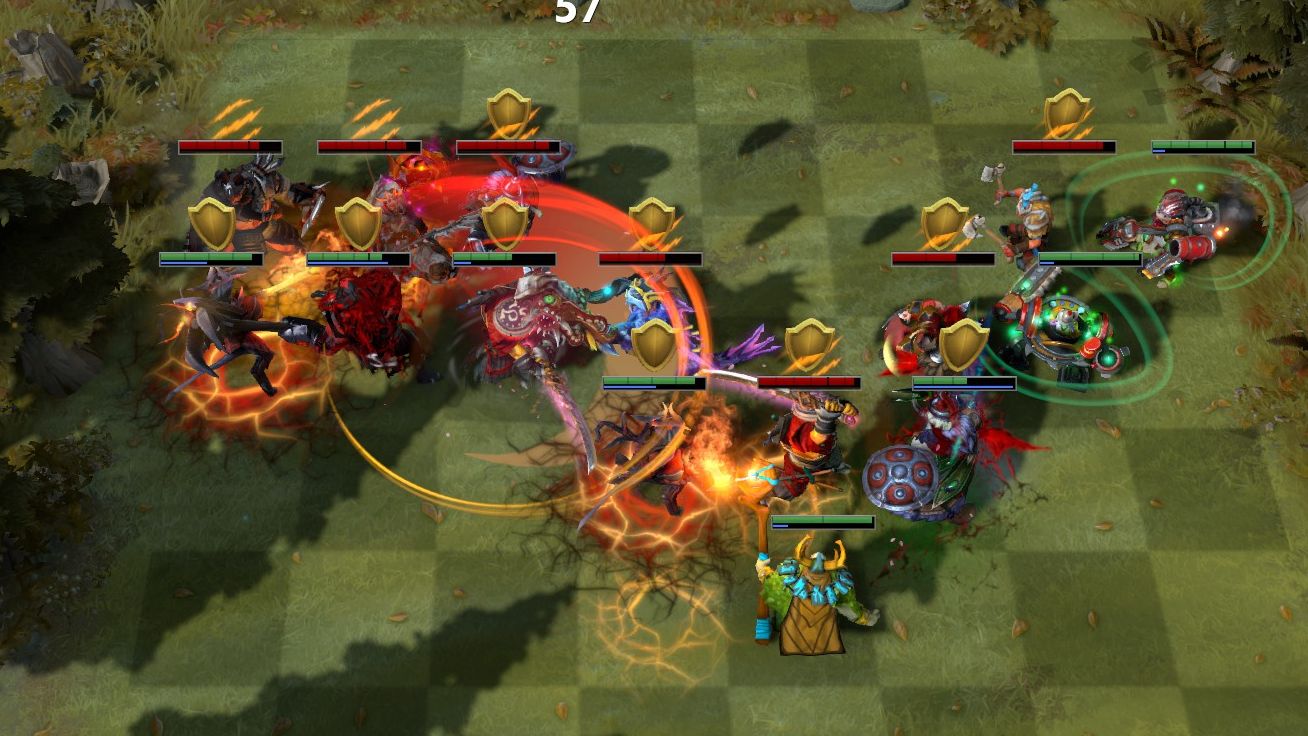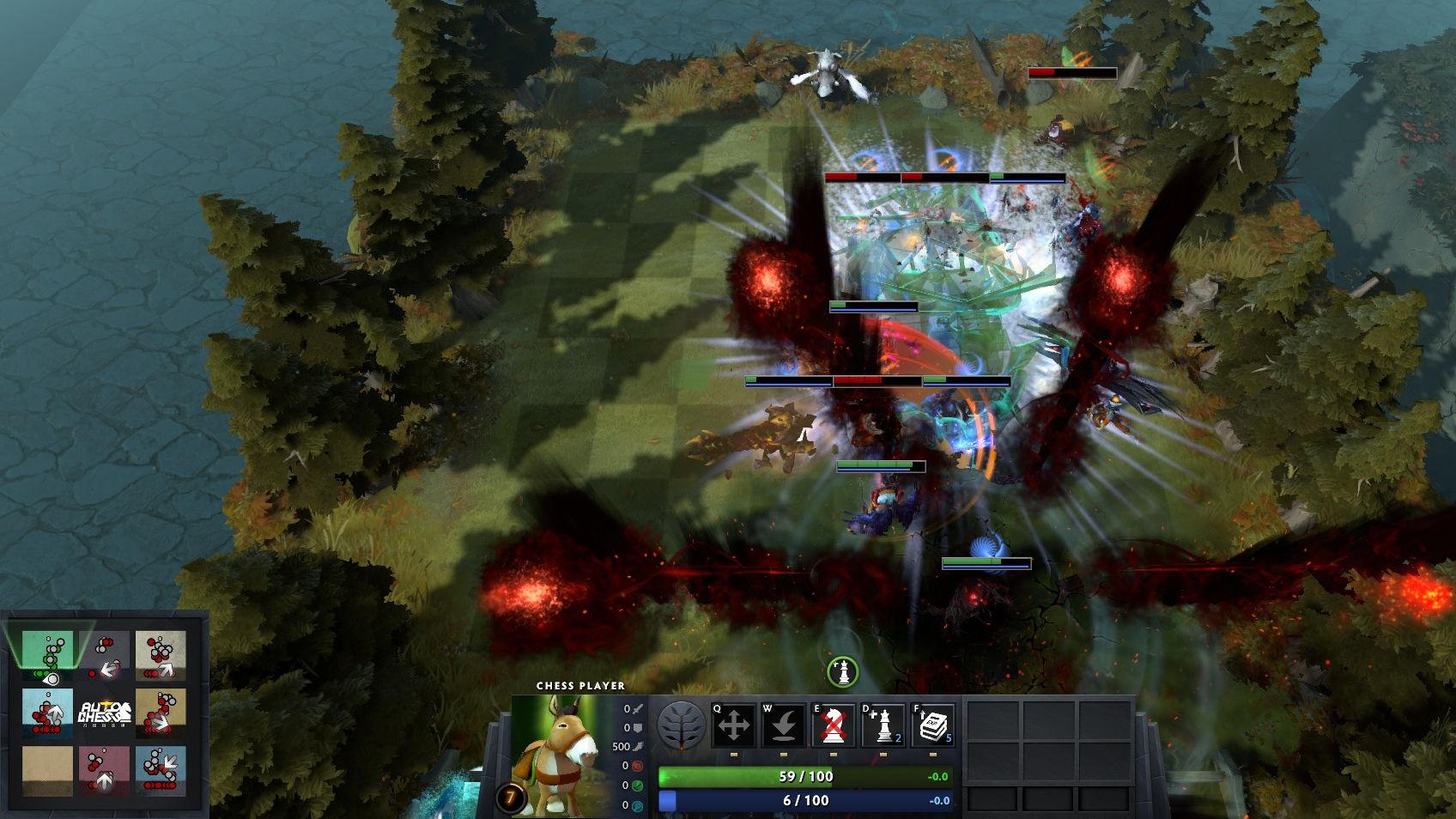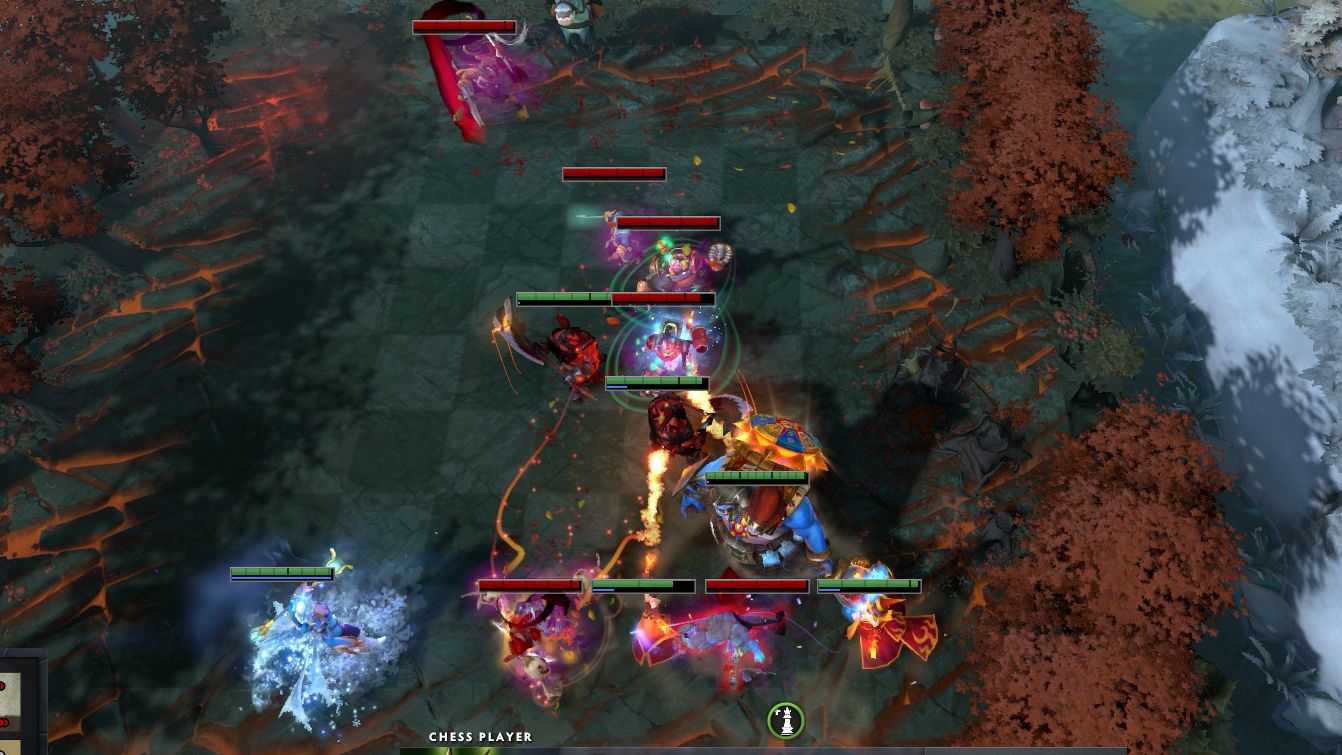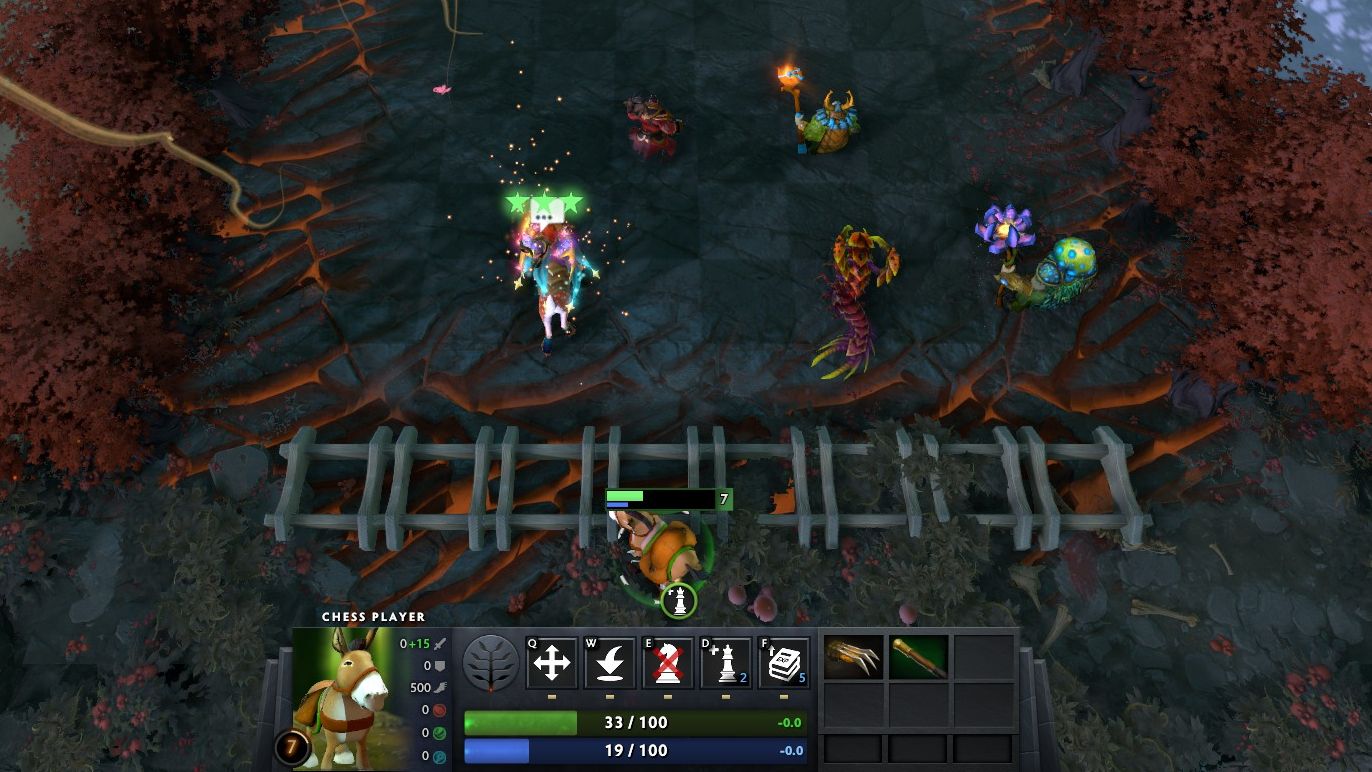Dota Auto Chess: The joyful deck-based Dota 2 game that Artifact isn’t
It's not really like Dota or Chess, but it is brilliant.

Believe it or not, learning Dota 2 is easy nowadays. I don’t mean easy in the sense that it is straightforward or comprehensible or painless. I mean easy in the sense that it is slightly less angry at you for wanting to know what’s going on. I mean easy in the sense that people like me will tell you that you’ve never had it so good. We had to walk two miles in the Frostivus snow to find a match, and whittle our own Force Staff by hand and no-one had even heard of Purge and his useful video tutorials.
Dota Auto Chess—a spectacularly popular custom game mode by Drodo Studio—is a return to that initial bafflement. “You can pick dota heros as your chesses,” says the blurb, “and they will automatically fight for you on a 8*8 chessboard.”
Now, I have 2000+ hours of Dota on my account. I beat my mum at chess when I was in a hospital bed, stuffed with morphine after a life-saving operation. Neither of these skillsets has proven particularly useful in Dota Auto Chess.
The broad idea behind Dota Auto Chess is closer to deck-building games than to either chess or Dota. The basic pattern of each round is: earn money, choose whether to spend that money on heroes, position those heroes on the board, then let a fight against the heroes of a randomly chosen opponent (from the seven others you’re grouped with) auto-resolve. If you win, you get a bit more gold and maintain your health bar. If you lose, you’ll take a bit of damage. A match lasts as many rounds as it takes for only one player to be left standing. You can keep an eye on how everyone’s doing via a leaderboard on the right hand side of the screen.

Because nothing related to Dota is ever simple, there are a lot of other variables to keep track of along the way. Managing your gold is vital—you want to balance investing in heroes and getting gold through fighting, with keeping some in your pocket to earn interest, spending to level up your donkey (and thus increase the number of heroes (referred to as “chesses”) which you can have on the board), and re-rolling the hero selection.
Each hero is listed with a species and class. If you have multiple heroes from that species or class on the board you can get boosts. The orc species combo gets you a higher maximum HP for each orc, the mage class combo reduces enemy magic resistance.
Plonking down three identical heroes of the same level (with one or two class exceptions) will merge them into a single, more powerful hero.
As well as that interplay there’s a spatial element. Do you bunch your heroes up or spread them out? Do you try to protect a vulnerable unit or shove them to the front as a meat shield? How can you keep important combos in play by keeping the relevant units alive? That’s one part which felt like it was drawing on my actual Dota knowledge.
The biggest gaming news, reviews and hardware deals
Keep up to date with the most important stories and the best deals, as picked by the PC Gamer team.
Another part which taps into that knowledge is the item system. Some rounds have you facing off against non-player units—the neutral creeps from Dota’s jungles. If you beat them they can drop little treasure chests containing items which the donkey can fetch and put in its little backpack. You can then ask the donkey to deliver the items to a specific unit, thus bestowing its benefits to that unit. Essentially, it’s the courier function the donkey traditionally fulfils in Dota 2. Knowing the types of items which benefit particular heroes in the main game will give you a headstart here. If you don’t know Dota you might not realise you need to deliver the items to specific heroes at all instead of just collecting them in your pack.
Then there’s the merge-three minigame. Plonking down three identical heroes of the same level (with one or two class exceptions) will merge them into a single, more powerful hero. This has knock-on effects when it comes to which heroes you buy, when you place them on the board, and how it raises or reduces the number of units on the board.

When I booted the game up for the first time it wasn’t even clear where I was, or how I was supposed to chess. The game tips disappeared offscreen before I’d read the first word and the camera was pointing at a rival’s board, meaning I couldn’t see the result of any of my actions. The resulting panic is how I learned that the boards of each of the eight players are presented as physical islands in a 3x3 grid. Panning around you can check in on other players or enjoy the fact that the middle board is missing, replaced by a small version of the Dota map.
Finding my island is how I discovered I needed to interact with my chesses by selecting a donkey and having the donkey do the chess on my behalf. If you’re familiar with Dota, moving your donkey around is probably also when you’ll realise it’s not actually a donkey. Instead it seems to be the hero Io (as per the lore: a multidimensional wisp billed as a Fundamental of the universe) wearing a donkey costume. You can tell it’s Io because it’s making Io’s Ibiza chillout beeping and blooping noises and trailing particle effects across the chessboard.
The existential question of “when is a digital donkey not a digital donkey” is irrelevant to play, but it’s fun to notice how pieces of the main game are repurposed in these custom modes. Again, it’s a way that Dota Auto Chess feels true to an older form of Dota—the Defence of the Ancients which emerged from the Warcraft III fan-made map cauldron, and whose quirks are often the result of units being turned to a new purpose.
I’m absolutely loving it. In each phase there are a manageable number of choices to make. Making a sub-optimal choice doesn’t feel like a total disaster. It taps into the little jolts of pleasure casual games are good at—the satisfaction of merging heroes, auto-fought battles with over-the top effects and the chance to win, a little leaderboard…

Another joy is the lack of toxicity and the lack of pressure. It probably says a lot about the confusing interface that for ages I had no sense of whether the lack of repulsive messages was because the game elicits less rage or whether there’s just no all chat function. A message in Russian during my fourth match points to the former. But, with or without chat, I often feel massive pressure in PvP games. I don’t want to embarrass myself. I don’t want to lose. I particularly don’t want to be the worst on any leaderboard.
We’re just having our armies and choices calibrated and recalibrated against each other. And it’s this distinction which takes the sting out of the competition without damping the pleasure of winning.
But here, I’m playing a weird once-removed version of PvP. My squad of heroes is mostly pitted against the heroes of a human opponent, but the other person isn’t spectating that match. They’re looking at a different chess board, watching their heroes take on a randomly chosen selection of someone else’s heroes. It might end up being mine, but it might not. Me winning or losing doesn’t affect them directly. We’re just having our armies and choices calibrated and recalibrated against each other. And it’s this distinction which takes the sting out of the competition without damping the pleasure of winning.
But what would a free-to-play game within a free-to-play game be without cosmetic microtransactions? An excellent question, dear reader. Well, you can earn or buy candy—the premium currency and spend it on spins of a slot machine. The rewards from spinning this machine are different couriers. So it’s not pay-to-win, just a different look for your non chess piece character.
And it’s not pushy either—a real contrast to the Dota client it sits within. While logging in to Dota 2 to access the custom game section, Valve immediately invited me to spend £28 on an outfit for a character I don’t even play. After I refused, it reminded me I can spend £2 to open a seasonal treasure chest. At some point I fully expect the Steam store will stop trading in cash and start accepting the souls of children in exchange for digital hats. But I digress.
The above should give you a sense of both the low barrier for entry (“low” being a relative term and entirely skewed by Dota’s base level of nonsense) and the ridiculously high skill ceiling of Dota Auto Chess. It manages to be similar to and the polar opposite of Artifact’s considered design and overwhelming complexity.
It’s a joyful, weird, opaque project—a hodgepodge of casual mobile gaming compulsion and PC gaming at its most bloody-mindedly hardcore—spitting personality and spell effects from every angle.
If you want to get into the mod yourself, check out our Dota Auto Chess guide.

